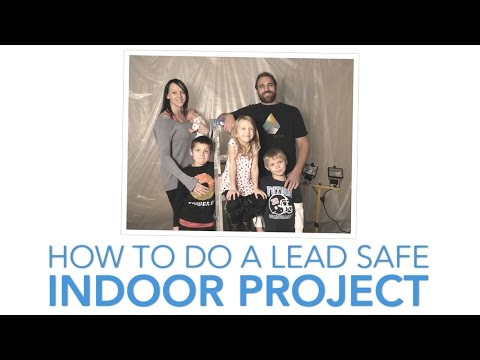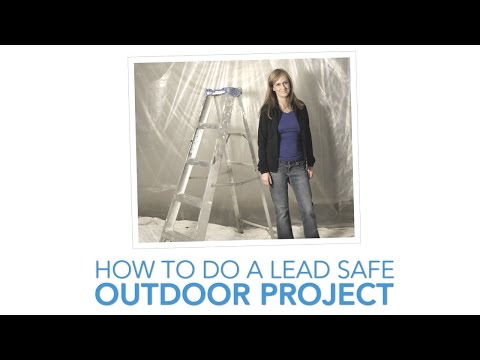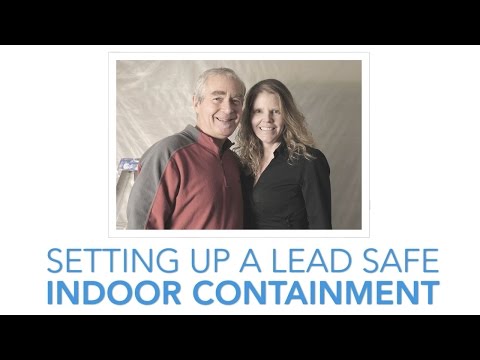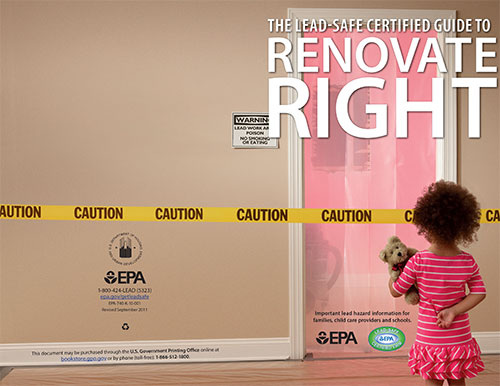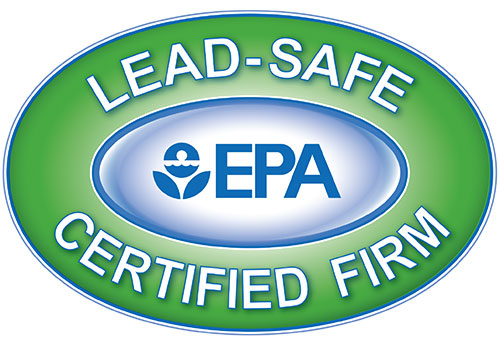Advice for DIYers
Protect Yourself and Your Family from Lead Exposure During Home Renovations, Repairs, and Other DIY Projects
WHAT YOU NEED TO KNOW: LEAD POISONS PEOPLE, ESPECIALLY CHILDREN
Lead is a toxic metal, harmful to everyone, but especially children, pregnant women and pets. Poisoning typically occurs by inhalation or swallowing of trace amounts of lead dust. The primary source of lead dust is from deteriorating lead-based paint or the disturbance of intact lead-based paint during renovations. Lead was banned from residential paints in 1978. If you live in a home built prior to 1978 it is important to learn to work lead-safe, contain lead dust, and clean-up safely to protect yourself and your family. In NH, each year, 1 in 3 parents of children who have been poisoned by lead report that renovations have taken place in the last six months. Renovation, repair, and painting activities that disturb lead-based paint (like sanding, cutting, and demolition) can create hazardous lead dust which can be harmful to people, especially young children and pregnant women. Home repairs that create even a very small amount of lead dust are enough to poison your child. If it is not possible to hire a RRP (Renovate, Repair, Paint) Certified Contractor, who has been professionally trained in lead-safe work practices, to complete the work on your pre-1978 house, it is important as DIYer, that you learn to work lead-safe, contain lead dust, and clean-up safely to protect yourself and your family.
No one is looking over your shoulder when you are making repairs or renovating your own home. But even if no one is watching, it is hard to justify not following safety precautions, especially if there are small children, pregnant women or pets in the home. They can all easily be poisoned from lead dust if lead-safe work practices are not followed. The impacts of lead poisoning are lifelong and yet the steps you can take to prevent your family from being poisoned are easy. See below for information and guidance about working lead-safe.
It is important to understand that DIY does not apply to landlords; landlords who choose to do work themselves on their rental properties must, as a matter of law, comply with Federal EPA Renovate, Repair, Paint (RRP) laws. In order to work on their own rental properties, landlords must be RRP certified or hire an RRP certified contractor.
Step 1: BEFORE YOU GET STARTED – FIND THE LEAD OR ASSUME LEAD IS PRESENT
If your home was built before 1978, it is safest to assume that there is lead-based paint present in your home and conduct all renovations or repairs in a lead-safe manner.
Another option is to test the paint in the areas that will be disturbed during your renovations or repairs to determine if lead-based paint is present. At a low cost, you can buy a lead test kit at a local hardware or home store. These can be a good first step in determining if there is lead present, but directions must be followed precisely.
If you want to definitively determine if you have lead paint, you can hire a certified lead inspector or risk assessor to identify the presence and exact location of the lead throughout your home.
Step 2: LEARN A FEW SIMPLE (and very important) LEAD-SAFE WAYS TO WORK
 Some basic lead-safe work techniques are to control the dust, work wet, and clean up thoroughly. These steps will seem a bit cumbersome and slow at first. However, if done correctly, these basic dust control measures will protect you and your family. They are the same safety procedures you should expect from any EPA lead-safe certified painters and remodelers.
Some basic lead-safe work techniques are to control the dust, work wet, and clean up thoroughly. These steps will seem a bit cumbersome and slow at first. However, if done correctly, these basic dust control measures will protect you and your family. They are the same safety procedures you should expect from any EPA lead-safe certified painters and remodelers.
Take a few minutes to watch videos on DIY lead safe renovations where you will learn lead safe work practices, including how to:
- Keep other people and pets away project site, especially young children and pregnant women until work is completed and area is properly and fully cleaned;
- Protect yourself. Wear the proper personal protective gear whenever disturbing lead-based paint Work wet.
- Minimize dust creation by misting surfaces with water before sanding, scraping, drilling, and cutting material with lead-based paint;
- Properly conduct renovation techniques to minimize dust and debris created;
- Properly cover the floor or ground within the work area with plastic sheeting to prevent contamination and contain all dust and debris generated;
- Clean all tools and equipment and the work area, using HEPA vacuum cleaners at the end of each day;
- Leave lead dust behind by changing out of your work clothes before you leave the work area at the end of each day.
Step 3: CLEAN UP (thoroughly) and TEST AGAIN
Cleaning-up safely and thoroughly when finished is as important as following lead-safe work procedures.
- Use the spray bottle to wet down the plastic sheet to keep dust in place. Begin to fold the plastic inward, starting at the corners until the plastic is fully rolled up on the floor.
- Use a thick heavy-duty (6-mil) garbage bag to dispose of the rolled plastic, worksite debris and disposable cleaning materials. Seal bags tightly with duct tape.
- Wipe down all tools.
- Vacuum with a HEPA vacuum and then wipe all surfaces with a damp disposable cloth, starting from the top and working your way down.
- After wet washing, re-vacuum all surfaces with a HEPA vacuum.
- The area should now be free of all visible dust and debris. You should also be able to take a white glove run it over the walls and all other surfaces and have it come back clean. Even after performing this cleaning the only way to ensure lead-contaminated dust is not present is to take dust wipes and send them to a laboratory for analysis.
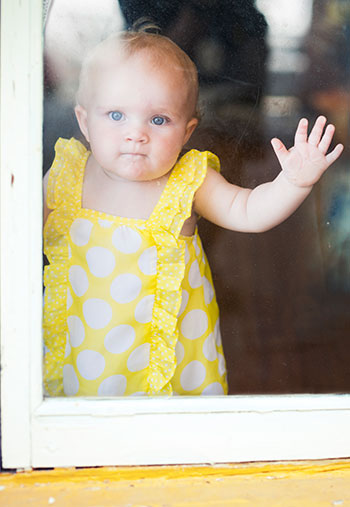
Additional Information and Resources:
